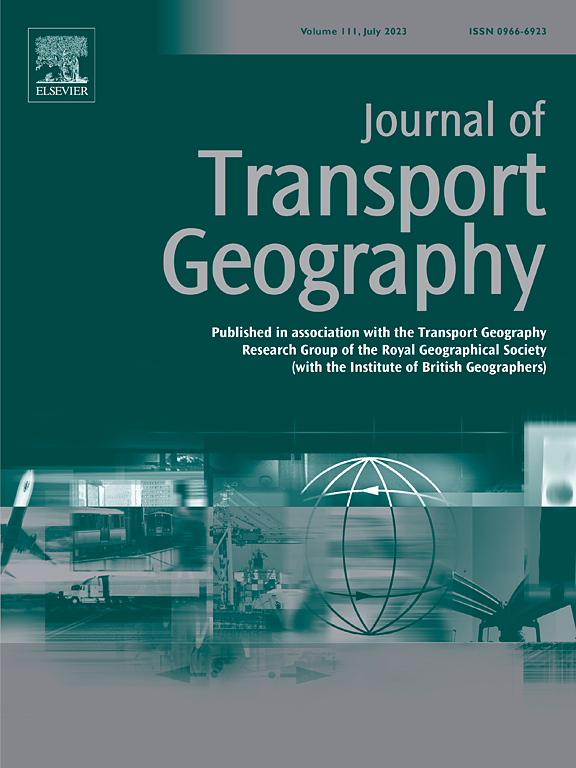了解社会人口差异对接受最后一英里交付技术的影响:一项比较分析
IF 6.3
2区 工程技术
Q1 ECONOMICS
引用次数: 0
摘要
近年来,我们见证了全球电子商务的发展,这对最后一英里配送产生了重大影响。本研究考察了性别、年龄、城市水平和家庭规模等因素对送货偏好的影响,包括夜间和周末送货、包裹储物柜的使用以及对自动送货机器人(adr)的接受程度。这项研究展示了一项在欧洲、亚洲和北美进行的全球调查的结果,共有1344份回应。该调查的重点是用户的社会人口特征以及他们对最后一英里物流的偏好,包括电子商务平台的使用和配送选择。有序物流模型帮助确定了对消费者交付选择的重大影响,提供了对最后一英里物流发展趋势的见解,并采用了新的城市物流举措。主要发现包括,老年人不太可能喜欢夜间分娩,而受雇的受访者更喜欢夜间分娩。性别虽然在所有递送方式中并不总是一个重要因素,但确实影响了包裹寄存柜的使用和提供个人数据的意愿。年轻人和生活在城市的人对adr表现出更大的开放性。教育程度对包裹寄存柜的使用和更快递送方式的使用产生积极影响。图形分析显示了网上购物习惯的性别差异。商业平台(本地商店、国际市场、本地市场)的使用情况在性别上基本相似;然而,它表现出更明显的地理差异。总体趋势显示,每天平均有4到5个小时可以在家分娩。最常见的购物是食品相关产品和小件快递,比如书籍和电子产品。这些发现反映了对分娩偏好的潜在影响。本文章由计算机程序翻译,如有差异,请以英文原文为准。
Understanding the impact of socio-demographic differences on acceptance of last-mile delivery technologies: A comparative analysis
In recent years, we have witnessed the global growth of e-commerce, which has significant implications for last-mile distribution. This study examines the impact of factors such as gender, age, urbanity level, and household size on delivery preferences, including night and weekend deliveries, parcel locker usage, and the acceptance of autonomous delivery robots (ADRs). This study presents findings from a global survey conducted across Europe, Asia, and North America of a total of 1344 responses. The survey focused on the socio-demographic characteristics of users and their preferences for last-mile logistics, including e-commerce platform usage and delivery options. The ordered logit models helped identify significant influences on consumers' delivery choices, offering insights into evolving trends in last-mile logistics and the adoption of new urban logistic initiatives. Key findings include that older individuals are less likely to prefer night deliveries, while employed respondents preferred it. Gender, while not consistently a significant factor in all delivery methods, did influence parcel locker usage and willingness to give personal data. Younger people and those in urban settings show a greater openness to ADRs. Education levels positively influence the use of parcel lockers and the use of faster delivery options. Graphical analysis shows gender-based differences in online shopping habits. The use of commercialization platforms (local shops, international marketplaces, local marketplaces) was largely similar across genders; however, it exhibited more pronounced geographical differences. The overall trend shows an average home availability of between four and five hours per day for home deliveries. The most frequent purchase are food-related products and small deliveries, like books and electronics. These findings reflect potential implications for delivery preferences.
求助全文
通过发布文献求助,成功后即可免费获取论文全文。
去求助
来源期刊

Journal of Transport Geography
Multiple-
CiteScore
11.50
自引率
11.50%
发文量
197
期刊介绍:
A major resurgence has occurred in transport geography in the wake of political and policy changes, huge transport infrastructure projects and responses to urban traffic congestion. The Journal of Transport Geography provides a central focus for developments in this rapidly expanding sub-discipline.
 求助内容:
求助内容: 应助结果提醒方式:
应助结果提醒方式:


